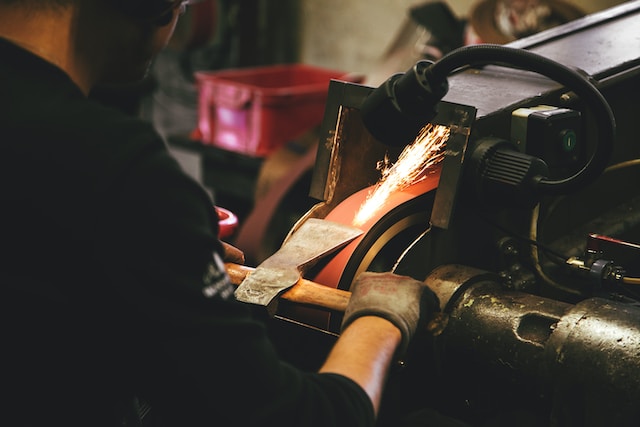Sharpening one’s axe will not delay the work of cutting wood. Every knife enthusiast understands the significance of this proverb. To us, a knife is not just a kitchen tool. It’s an extension of our hands, the bond between us and the ingredients. When the knife perfectly engages with the food, each slice is like a dance, precise and harmonious.

But sharpening is also a profound art, with each steel and sharpening tool having its unique charm. To keep your knife in its optimal state, let’s delve into how to pick the right sharpening tool for various steel types.
Damascus Steel
Damascus steel is an ancient steel-making technique, adored by many for its unique patterns and exceptional performance. Characterized by its high hardness and resilience, it’s recommended to sharpen it using **high-quality water stones**. Grit selection can vary based on needs; starting at 800-1000 for rough sharpening and progressing to 6000-8000 for finishing touches.

VG10 Steel
VG10 is a high-carbon stainless steel from Japan, renowned for its superb sharpness and rust-resistant qualities. For this type of steel, a **ceramic sharpening tool** is recommended as it offers a delicate grind, ensuring the blade remains sharp continuously.
Carbon Steel
Carbon steel, one of the most traditional knife materials, is prone to rusting. However, its sharpness and ease of sharpening make it a favorite among many professional chefs. For this material, both **natural water stones** or **diamond sharpening tools** are great choices, providing a swift and efficient edge to the carbon steel blade.
Every time I pick up a sharpening tool, I’m reminded of the ancient bladesmiths who breathed life into knives with their hands-on craftsmanship. Sharpening is not just maintenance; it’s a reverence, a dialogue between us and the knife. Choosing the right sharpening tool ensures your knife always remains at its best, with every slice narrating a story.
